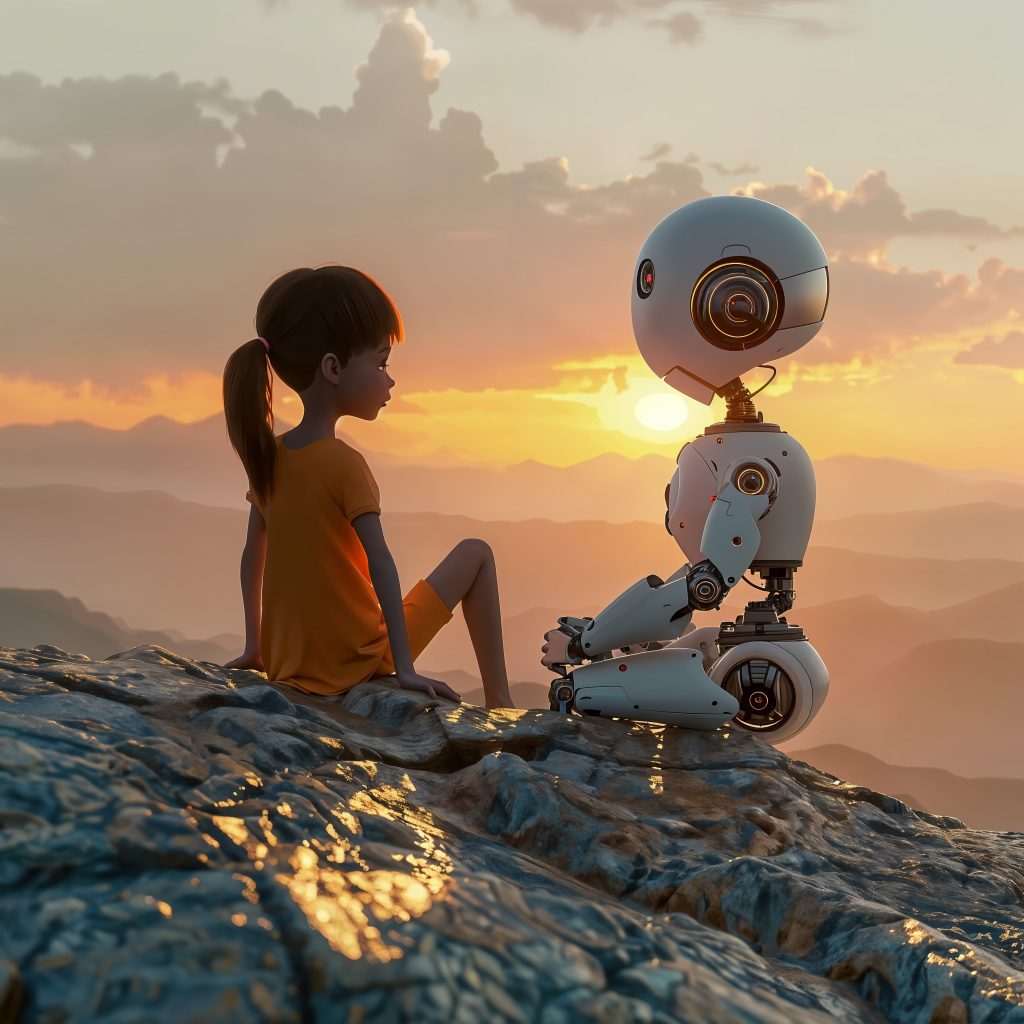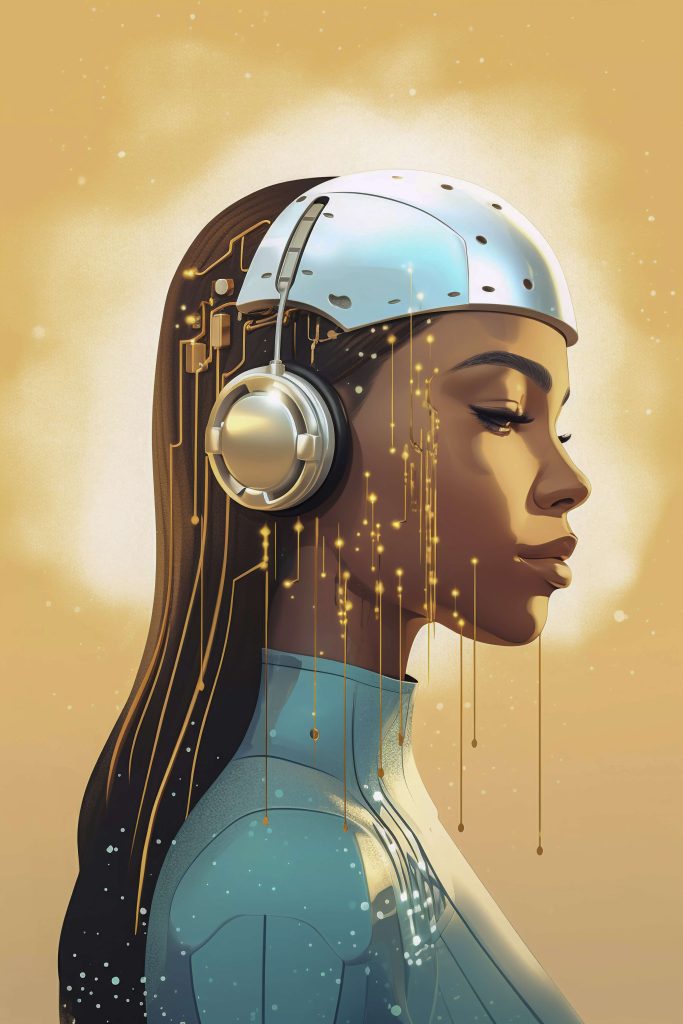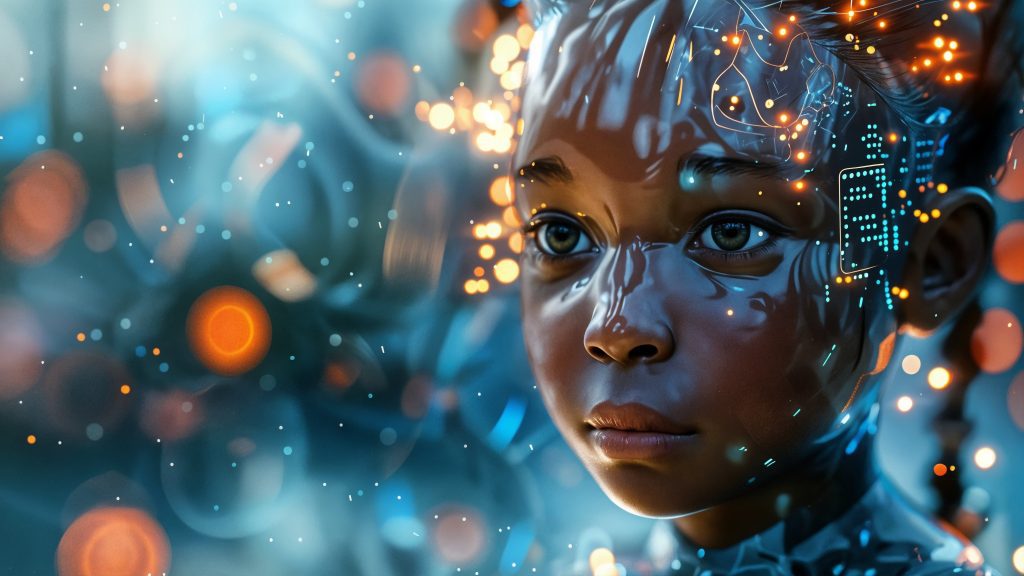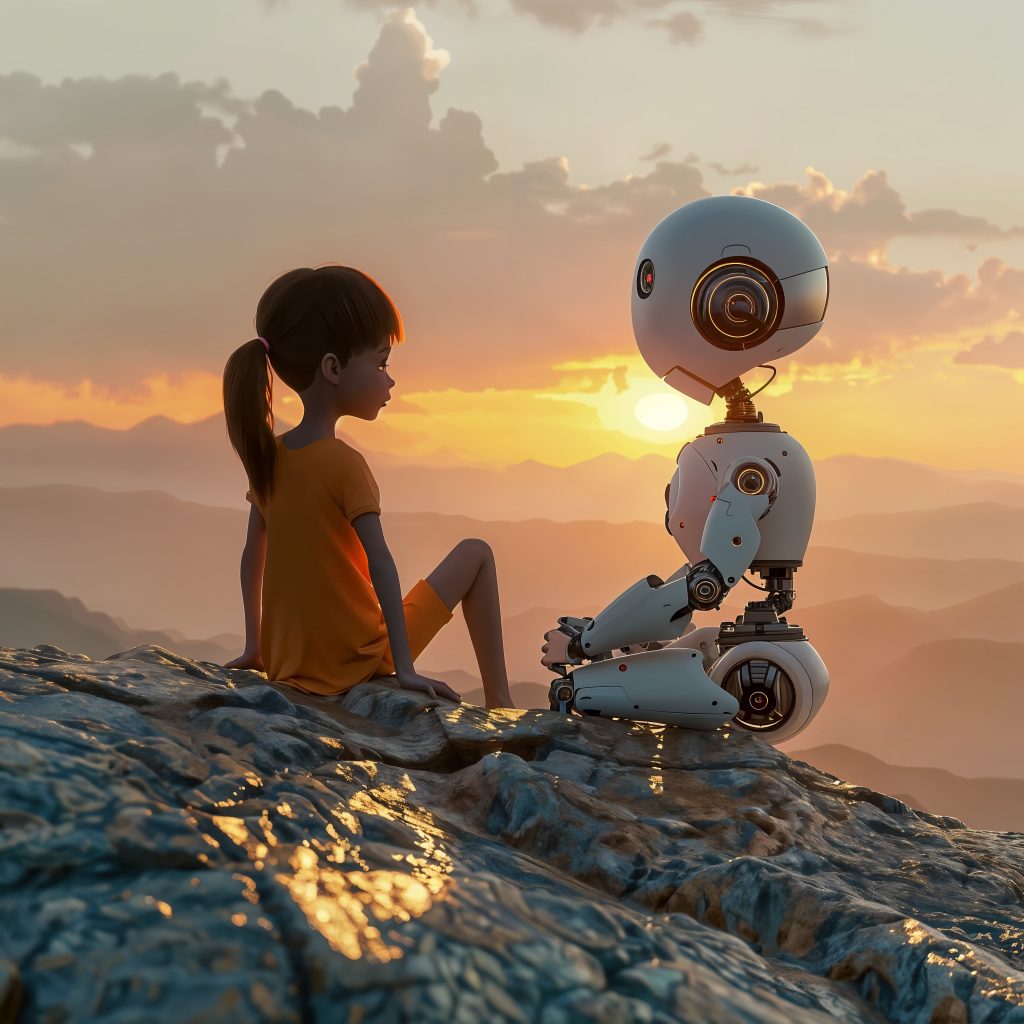
The future of AI art: The Death of Creativity
Discover the future of AI in art—its impact on creativity, artists, and innovation. Can technology enhance artistry without replacing the human touch?
Paintings, photographs, and even sculptures created by artificial intelligence are being produced; some of these pieces can fetch thousands of dollars. Does the way we define art need to change?
I watch as a dungaree-clad artist carefully and methodically puts pen to paper in the drawing room of a beautiful mansion in rural Oxfordshire. As her arm glides over the canvas, the marks slowly come together to form an abstract representation of her.
The Future of AI and Its Impact on Creativity
As modern technology keeps making strides in the world, more and more modes of convenience have been created. With smart electronics taking up space in every household, we’re faced with an automatic solution to almost every problem. But one such area where that level of automation was not required, was creative entertainment. Giving rise to digital art created through Artificial Intelligence (AI), and what a bleak concept that is.
The future of AI art also raises concerns about authenticity and ownership. Questions such as Who owns AI-generated content? or Can machine-made art truly be considered original? are at the center of ongoing debates. Moreover, the widespread use of AI tools may blur the line between human imagination and machine-generated outputs, creating challenges for traditional artists who rely on their craft as a livelihood.

Dependence on Artificial Intelligence
AI has become prevalent in our world to the point where it’s almost impossible to give up on. We have become reliant on what it has to offer, starting small with our smart electronics to its various uses in other fields like medicine, education, and industry.
Within that same breath, there is also a fear of what too much reliance can do. Have we begun to count too much on these luxuries, and will they inevitably come back to haunt us in the future of AI? These are the heavy-hitting questions that people are facing.
The Emergence of AI Art
With this new iteration of AI digital art, which began as a trend and quickly spread like wildfire, we have to wonder about the implications of it. Both good and bad, and whether or not this necessitates an intervention where we all need to take a step back and evaluate our priorities—and even more—when to give up.
What is AI Art?
From innovating software development to providing everyday convenience, Artificial Intelligence has quickly set its deep hold on us. With the help of AI, we analyze heaps of data to create an intelligent system that has the capacity to receive information and come up with its own conclusions—behaving almost like a human with its capabilities of perception.
As AI continues to dominate various fields and industries around the world, one of the most significant developments has been the emergence of generative adversarial networks (GANs). GANs are a type of machine learning algorithm that can learn to create new examples of data by training on large datasets.
In the context of art, GANs can be used to generate new images, music, and other types of creative content by learning from existing works. This is where AI art comes from, referring to any form of creative expression—paintings, music, poetry, and more—that has been generated or enhanced using artificial intelligence algorithms.
These recent advances in machine learning have made the rise of AI art possible by enabling computers to learn patterns and features that are common in the arts. This knowledge is then used to generate new art that is inspired by the original works but has its own unique qualities.

Future of AI – Death of Creativity?
Is AI art the death of creativity and artists?
The future of AI art is bright and full of possibilities. AI algorithms will develop further as technology progresses, making it possible to produce artwork that is even more realistic and striking to look at. We may anticipate that AI artists will experiment with new forms of expression and move beyond conventional artistic mediums.
On the one hand, AI-generated art can be seen as a new form of creativity in itself, and as with any art form, it can inspire other artists to create their own unique works. AI-generated art can also serve as a starting point for collaboration between artists and machines, where artists can use the output of AI algorithms as a basis for their own creative interpretations.
But on the other hand, a craft that takes hours or even ages for a person to hone and perfect—just on the off chance that they can reach a level of artistry that is uniquely their own—feels undermined. To think that something as genuine as that can be offset by a ‘robot’ imitating what has already been done by geniuses before, and presenting it as a new art form, seems almost insulting at best and downright alarming at worst.
Anna Indiana, an AI singer-songwriter whose songs were completely created without human involvement, took center stage in November 2023. Anna’s songs questioned conventional ideas of creativity and artistic autonomy, as each one was painstakingly created using AI technology. Some praised the technology developments that made such achievements possible, while others voiced concerns about the possible consequences of marginalizing the human element in artistic pursuits like music.
However, Anna Indiana’s appearance on well-known streaming services with songs that were created entirely without human involvement raised serious philosophical questions regarding the nature of art and the part that technology plays in its production.
Is All being AI generated Art?
One could argue that artificial intelligence already contributes to the creation of all new art by shaping and influencing it. According to Eric, “the majority of the internet will not be created by humans” in 2025. Consequently, Robert contended that “it’s nearly impossible that someone doesn’t use AI to think about a work or start preparing it in their mind.”
However, there is an issue if a large portion of what is currently available online isn’t actual, if the purpose of art is to imaginatively depict reality. “So, if you want to train your model using the internet as your source of culture, they’re already being poisoned by their own outputs,” Eric noted.
The Human Touch in Art
It is important to note that while AI can generate new content, it does not have the ability to replace the complex and nuanced decision-making process that human artists go through in their creative journey.
AI-generated art can be seen as a tool that helps artists enhance and explore creativity, but it cannot replace the human touch, imagination, and emotions that truly define artistic expression.
AI Art in Museum
This is how I forsee the future of Art after being disrupted by generative AI.
Conventional (physical) artists will continue to exist and will not be significantly impacted. The installation and 3D art found in galleries and museums won’t be impacted in the slightest. Since “museum” artists already incorporate AI into their creations, it won’t pose any threat to their livelihoods and, in fact, might even improve their work. Physical sculptures, paintings, etc., will still cost money.
Illustrators in particular are suffering because they are digital artists. As more and more authors—particularly self-published ones—use AI to reduce expenses and expedite the production of their work, book artists are currently losing business in large numbers to the technology. Writers may learn how to use AI to illustrate their novels from online groups, and the technique is becoming more and more popular. Unfortunately, AI will mostly replace digital artists.
But I think generative AI art “prompt engineers” will become a new profession. These individuals have studied art, have knowledge of art history, are experts in fine art (including photography), and are aware of the many art forms and eras.

Challanges and Controversies
Even while AI artists are becoming more well-known in the art world, they still have to deal with a number of issues and disputes. The question of authorship and creative intent is among the primary issues. The distinction between the artist and the machine becomes more hazy as AI creates art on its own. Who is the rightful owner of an AI-generated piece of art? Is it the AI algorithm or the human programmer?
The possibility for AI art producers to diminish human ingenuity and artistry is another difficulty. The widespread use of AI-generated art, according to critics, may devalue conventional art forms and jeopardize the ability and competence of human artists. Advocates of AI art, however, emphasize the possibility of human-machine cooperation, in which AI might complement human creativity rather than take its place.
Concerns exist regarding the ethical ramifications of AI artists as well. Large datasets, which may contain harmful or biased content, are used to train AI algorithms. Without adequate supervision, AI artists may unintentionally produce contentious pieces of art or reinforce negative preconceptions. In order to ensure that AI-generated art fosters equality and diversity, artists and developers must be aware of these ethical issues.
Conclusion: A Balanced Future of AI and Creativity
In conclusion, AI might not be the death of creativity for now, as it cannot replace the human imagination and artistic depth that drive innovation. However, it can act as a stepping stone for AI and human creativity to work together—producing innovative and inspiring art that reflects the best of both worlds.
The future of AI in art may not be about replacing humans, but about shaping a collaborative landscape where technology supports creativity rather than diminishes it.
